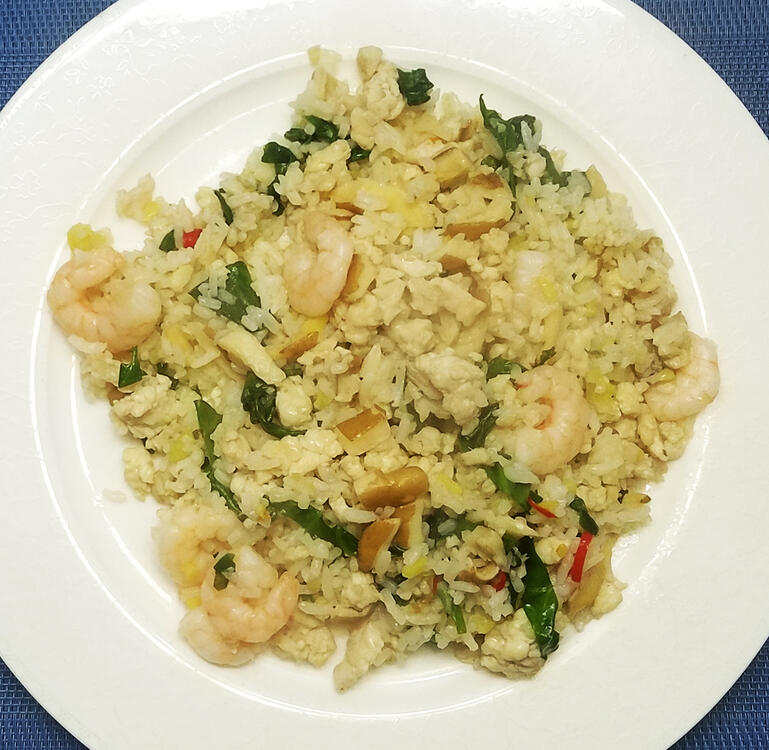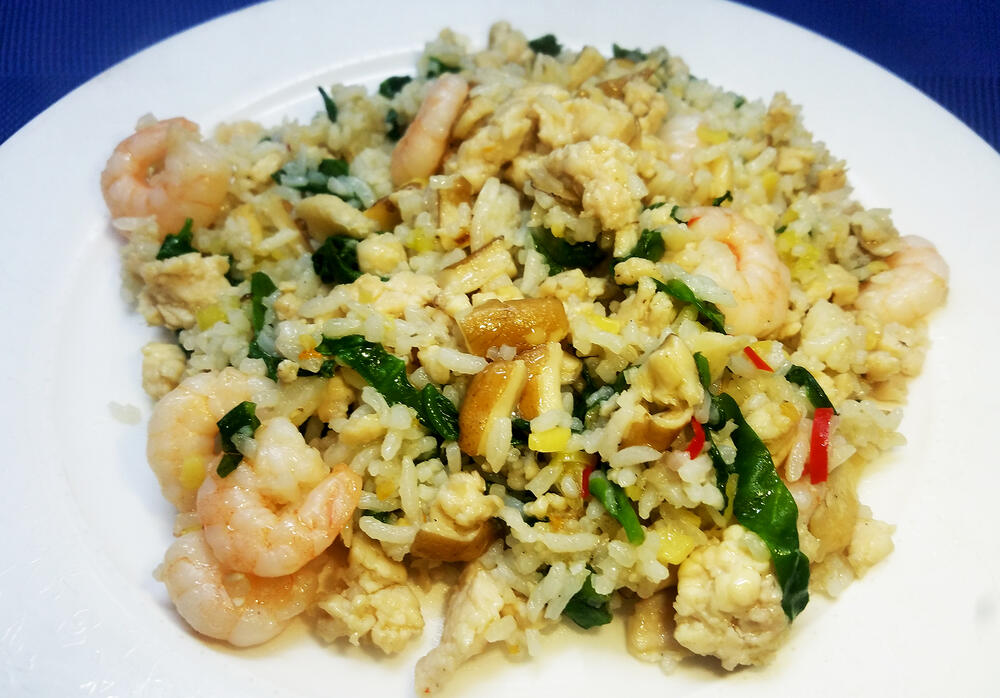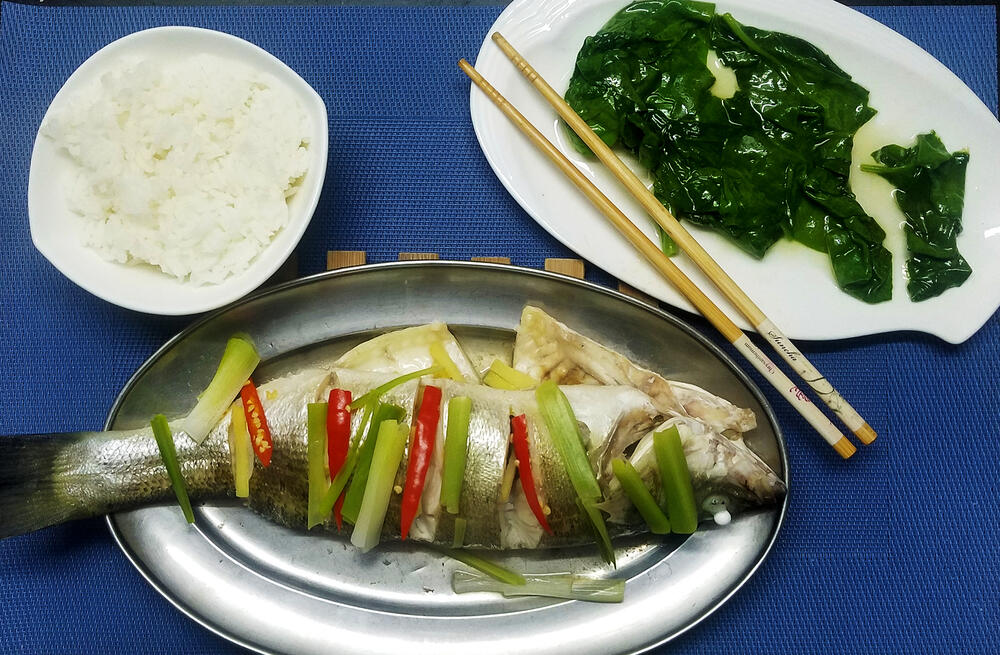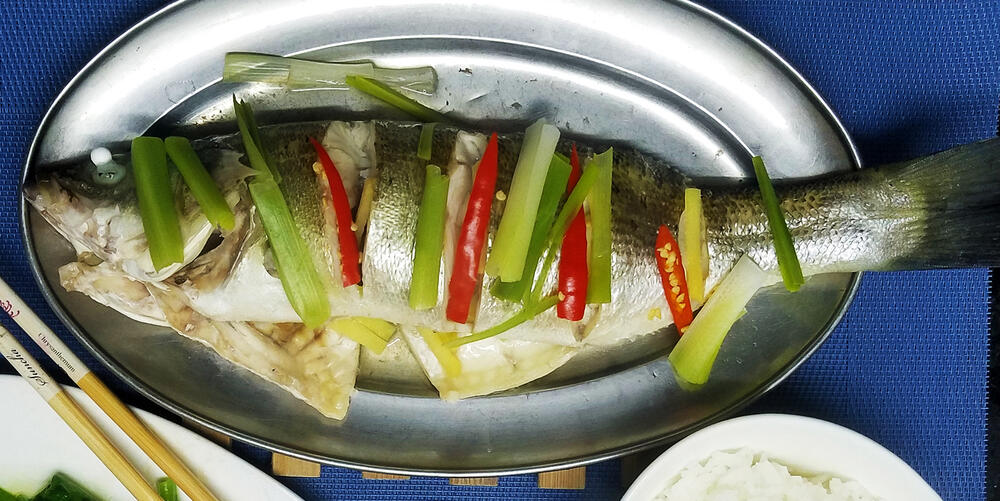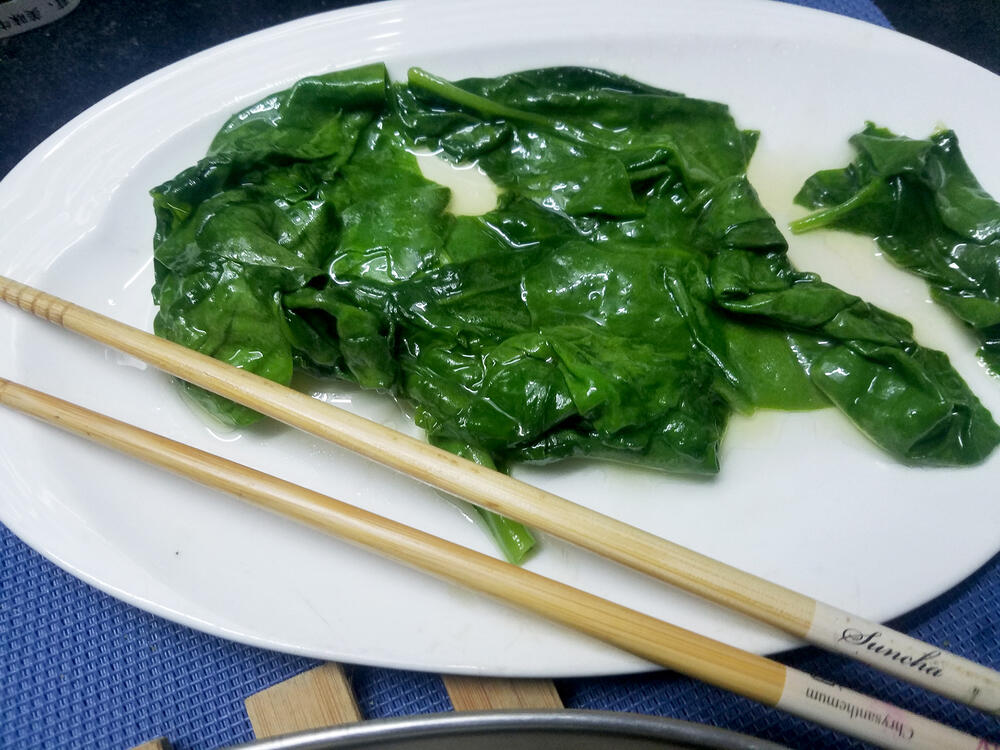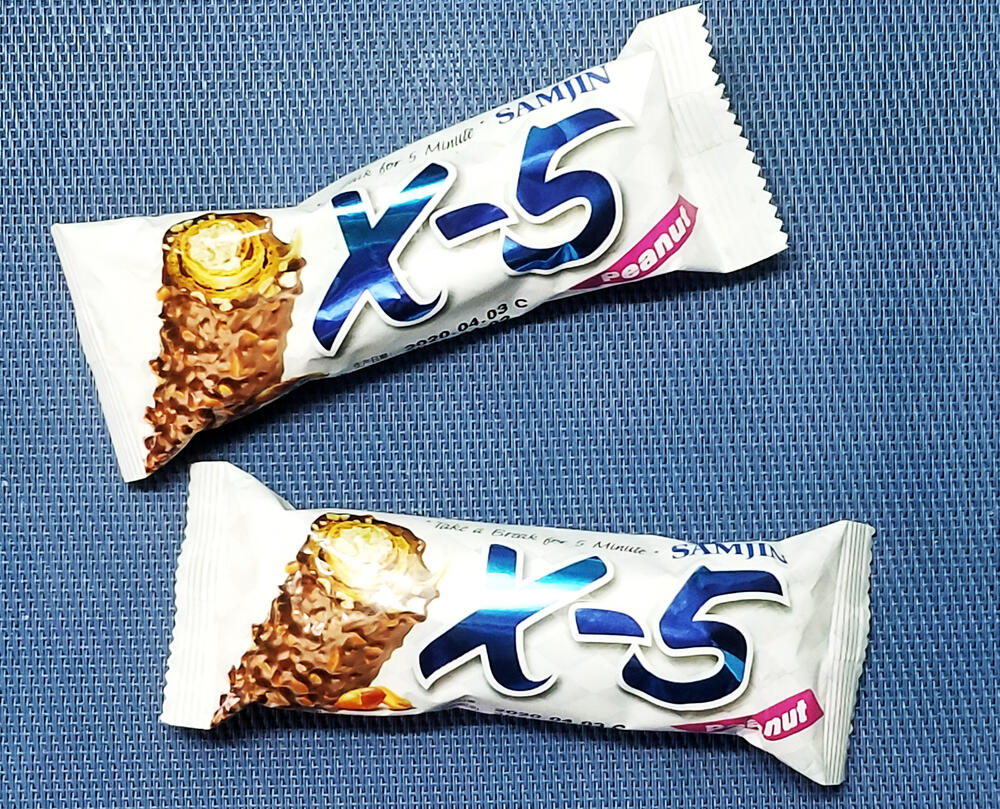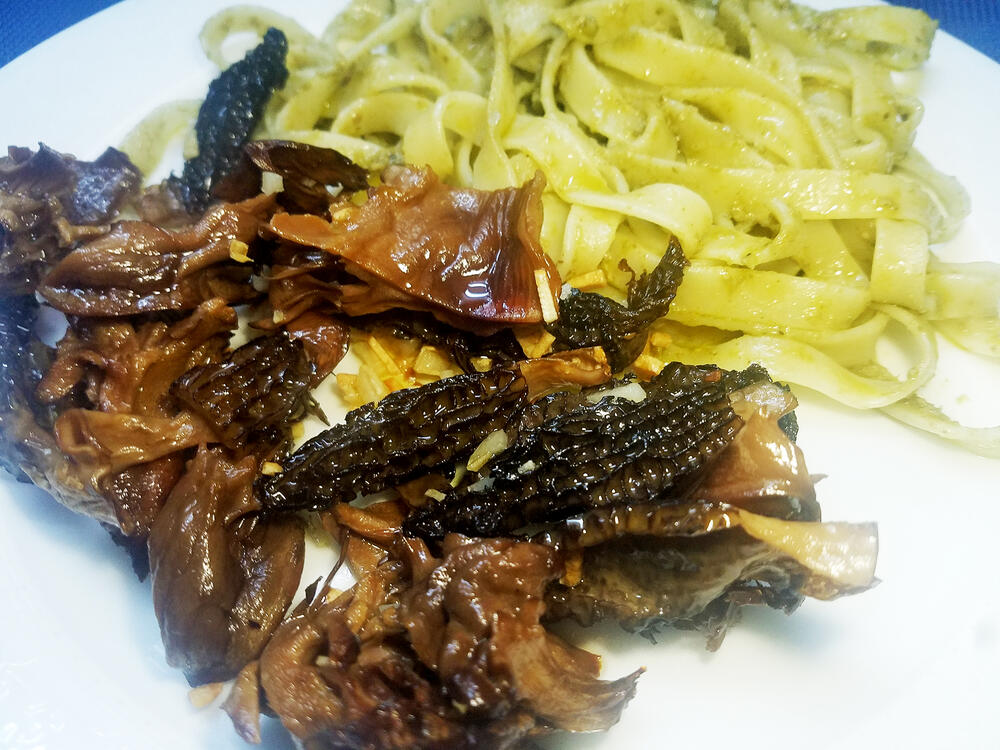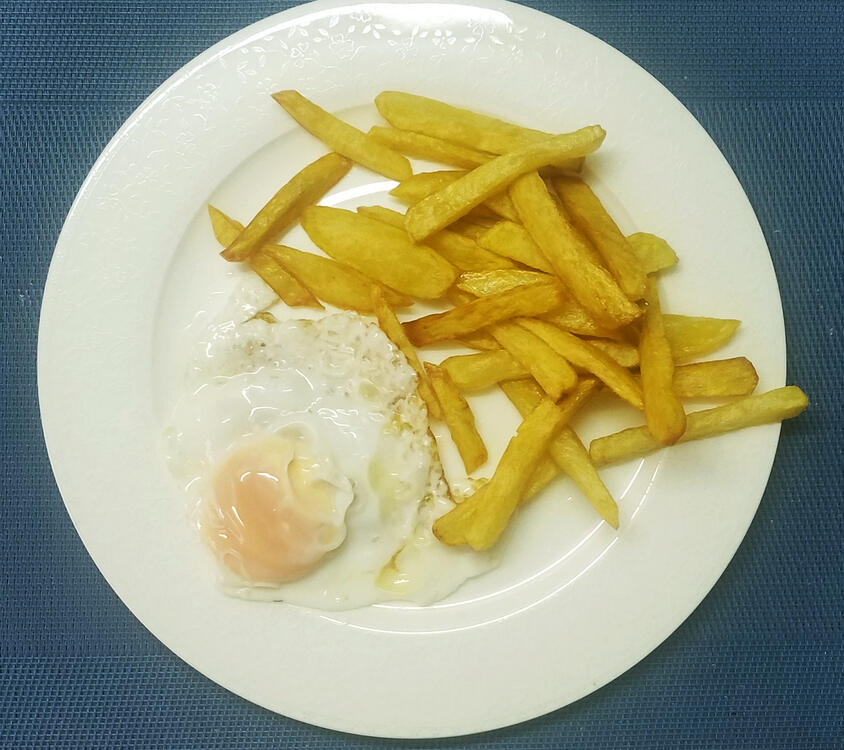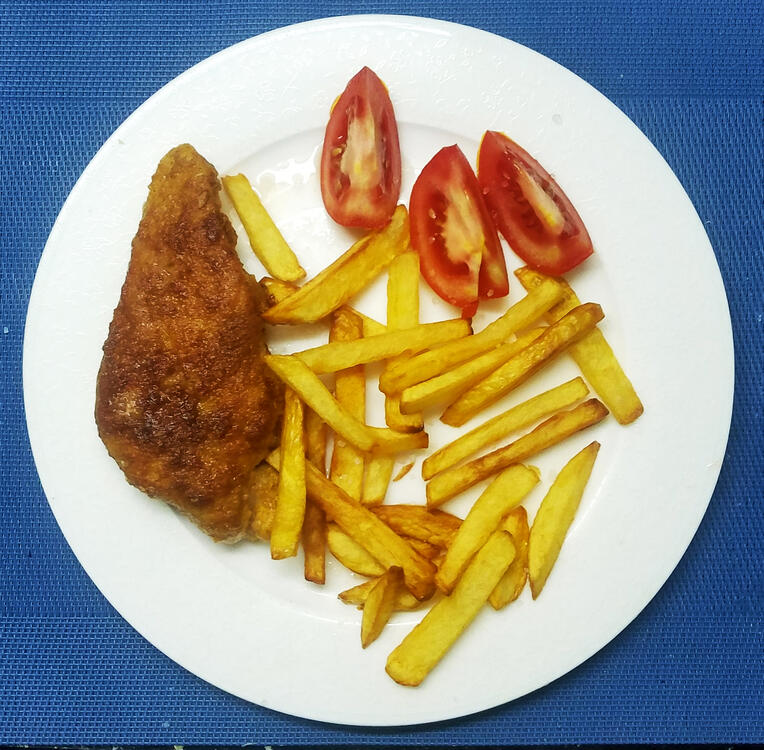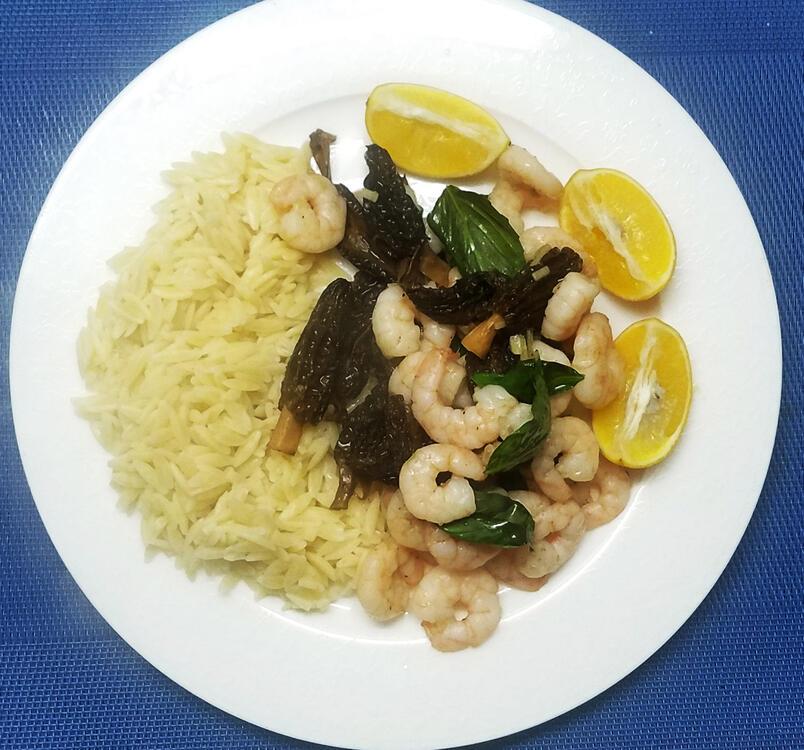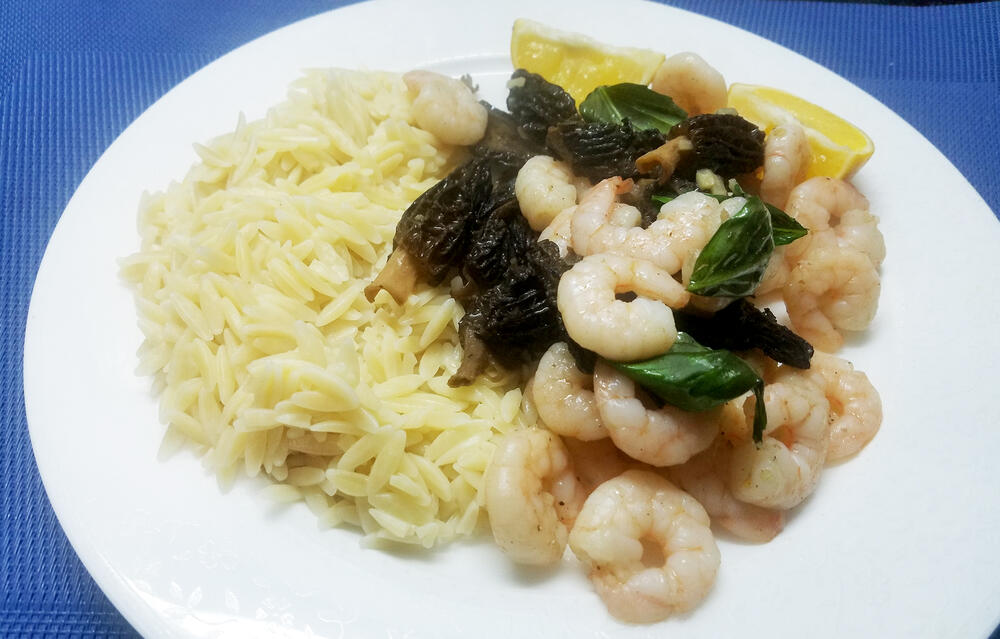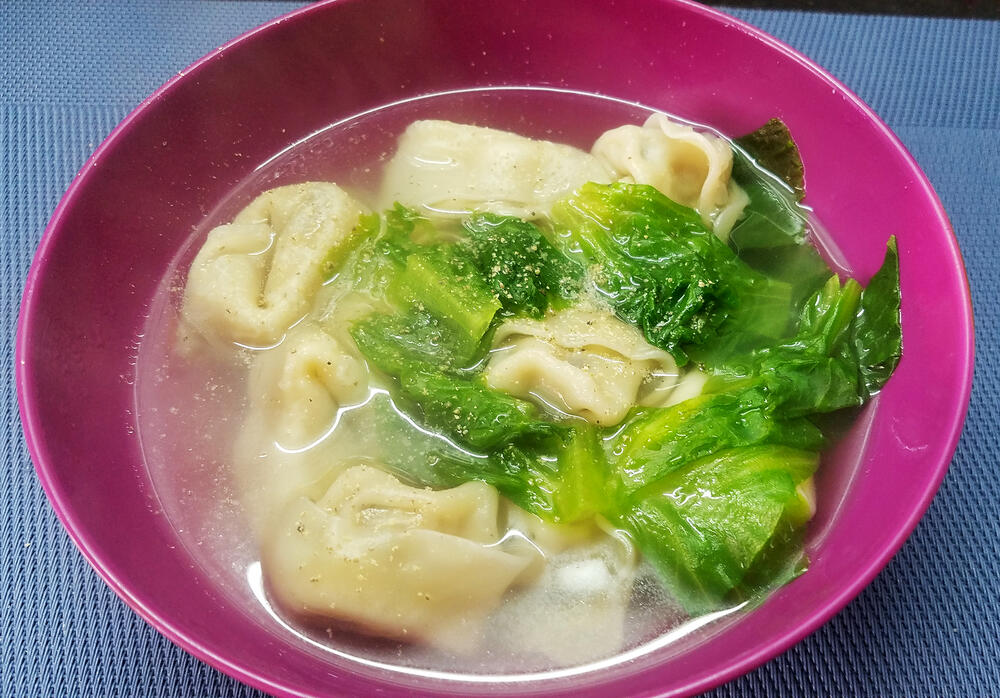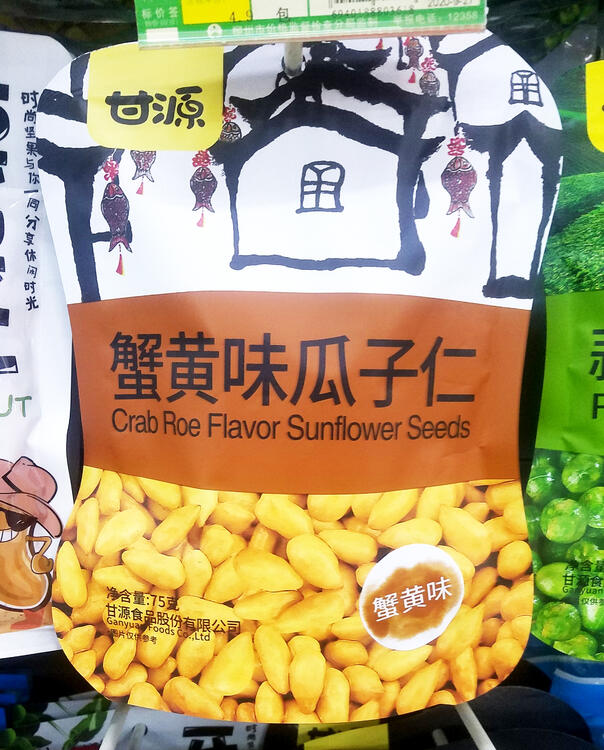-
Posts
16,703 -
Joined
-
Last visited
Content Type
Profiles
Forums
Store
Help Articles
Everything posted by liuzhou
-
and ras el hanout!
-
Now, Chinese restaurants in England (and perhaps where you live) usually call this "Special Fried Rice", a concept unheard of in actual China. I call it "using up leftovers and clearing the fridge/freezer fried rice". Minced chicken breast, shrimp, garlic, ginger, red and white chilies, mushrooms, Malabar spinach, rice, a wing and a prayer. No egg! No soy sauce!
-
I like me some kangaroo, balled or not. Can't get it here, though I do get stranger things. Pandaburger, anyone?
-
No sauce. Steamed fish isn't normally served with a sauce, here. The flesh is definitely scented by the aromatics and was also rather spicy from the chillis and ginger, but the delicate taste of the fish shone through.
-
Steamed sea bass (with garlic, chilli, ginger, scallions, Shaoxing wine and Vietnamese fish sauce). Lard fried Malabar spinach. Rice.
-

Airline Food: The good, the bad and the ugly
liuzhou replied to a topic in Food Traditions & Culture
Singapore Airlines sells out meals on parked plane -
It's the end of civilisation. KFC to sell stinky Luosifen in China There is no such thing as "chicken luosifen"! I notice they don't announce plans to sell it in Liuzhou. They wouldn't dare!
-
People in New Mexico live for 13.000 years. Must be great food!
-
These X-5 bars are a Korean chocolate bar which I buy in a Japanese store in China, I am guessing they might be Asian. But if you see any, buy them. They are so good I'm surprised the Geneva Conventions or some such international treaty didn't ban them. However, only buy the ones in the white wrapper. They are peanut flavoured. There is also a version in yellow wrapping which they gratuitously describe as "banana" flavour. Only if bananas taste like rancid, leprous, gangrenous socks which haven't been changed in months. Truly horrible.
-
All you need is a wok, preferably carbon steel or cast iron, and maybe a wok stand depending on your regular stove. Unless you are a restaurant. Chinese home cooks do not have butane burners and in a quarter of a century in China, I've never seen an electric wok! 1.4 billion people here use woks, usually more than once a day. On regular stoves and seldom ouside.
-
That confused me. I had to Google adovada. At first I thought it was a dyslexic avocado. But I know zilch about Mexican food, New or regular.
-
-
-
China's favorite urinating “tea pet” is actually a thermometer.
-
I'm, sorry but where do you get the poha to soak before you make the poha?
-
Chicken and Chips. Why not? Didn't make enough chips. Off now to correct that error and have extra chips for dessert. See you soon!
-

Chefs and their starter cookbook recommendations.
liuzhou replied to a topic in Cookbooks & References
Particularly this one. -

Chefs and their starter cookbook recommendations.
liuzhou replied to a topic in Cookbooks & References
Yes, I saw that. A good list. Agree 100% with Delia's inclusion. Would add any of Keith Floyd's books. -
-
It might take a while. My oven is dead.
-
I'll try something like that, but miss out on the red bell pepper, thanks. And use a different seasoning.
-
-


